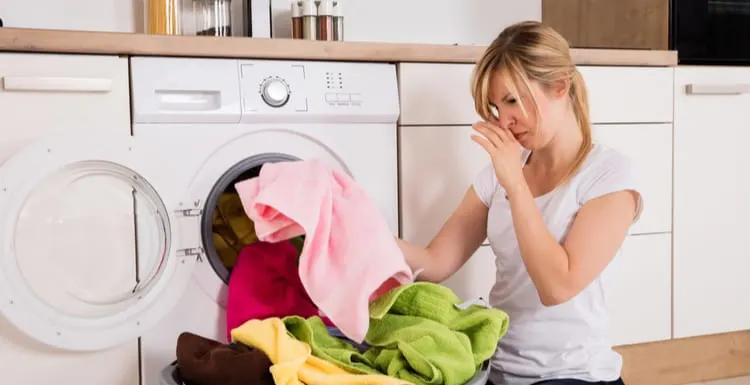Finding why a washer won’t spin and drain the water from your clothes is the first step to getting it fixed. Depending on the problem, you might choose to make the repairs yourself.
Alternatively, you might call a professional appliance repair technician to do the job. A washer won’t spin if there’s a problem with the drive belt or motor, motor coupler, lid switch, or pump.
We partnered with Networx to help you find local appliance repair techs. Click to below to get a FREE quote.
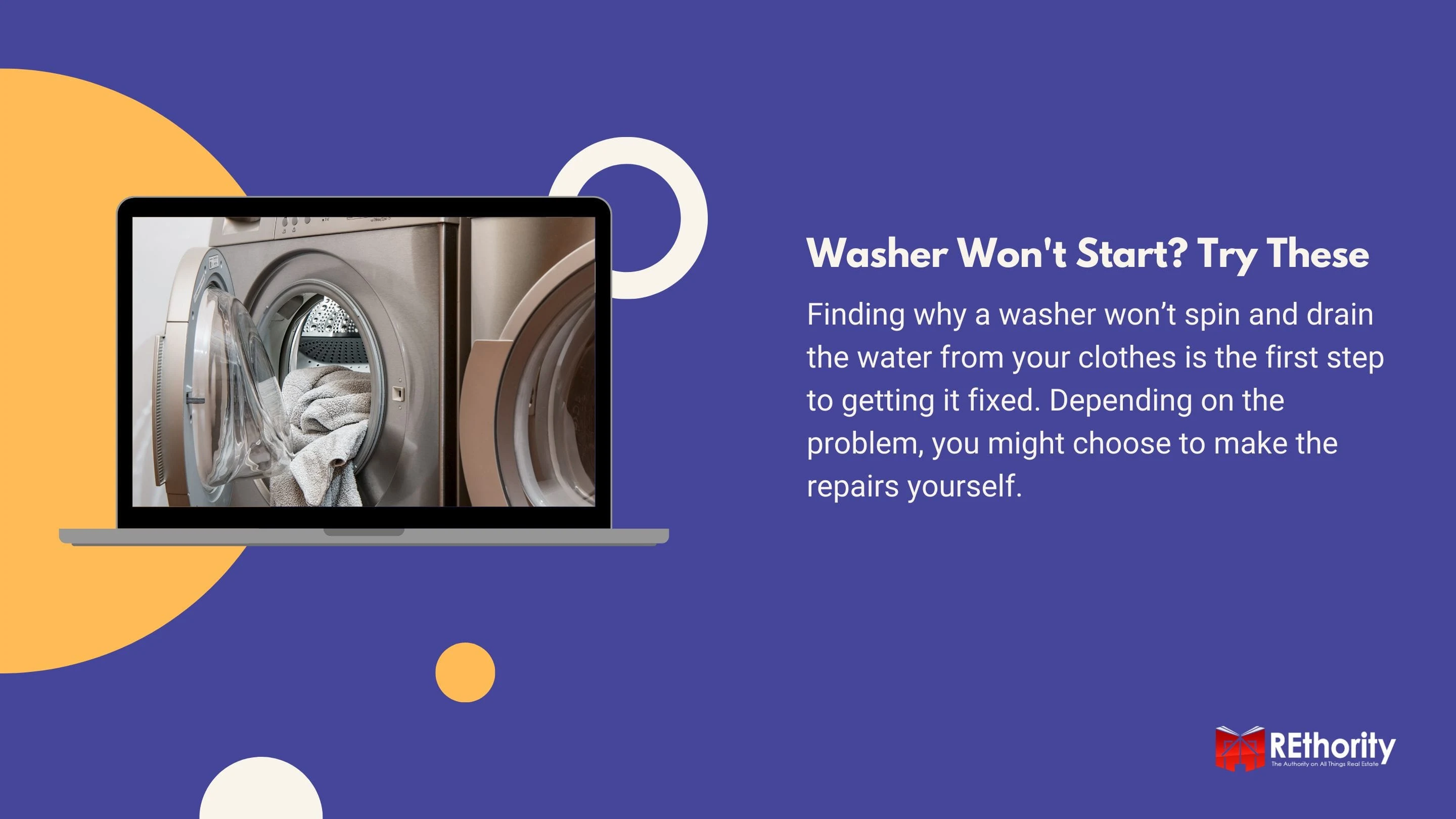
Fortunately, these issues are usually easy to diagnose when you know what you’re looking for. Not all washing machine repairs are simple, and some will require a professional.
However, there are a few that you can safely do yourself with limited tools. We’ll highlight these, their costs, and when to call a pro.
Common Reasons a Washer Won’t Spin
In this post, we’ve outlined the most common reasons a washer won’t spin. We’ve also included instructions on what to look for with each problem. Find out why your washer won’t spin.
Also, find out what kind of repairs are needed and how much you can expect to pay to get it working again below.
Drive Belt
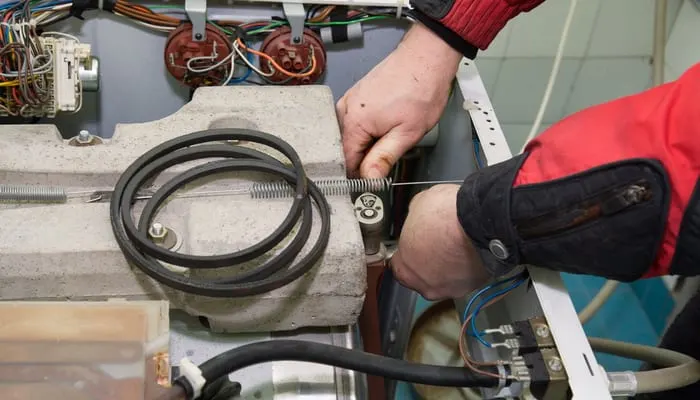
Miroslav Lukic/Shutterstock
Your washing machine’s drive belt helps the motor power the spin of the drum by wrapping around the motor and a pulley wheel. If it slips off or breaks, the machine can still agitate during the wash cycle, but it won’t be able to spin.
The Drive Belt Might Be the Problem If
Your washing machine’s drum agitates during the wash cycle but won’t spin. And your clothes are still soaking wet at the end of the cycle.
To find out if the drive belt is why your washer won’t spin, open the door of the washing machine and try to spin the drum manually. You should feel some resistance. If the drum turns easily, it might be the drive belt. In that case, you should:
- Unplug the washing machine from the outlet. Then, you can open up the access panel (refer to your washer’s manual if you’re unsure where to find the access panel on your model). You will need a screwdriver to remove the screws from the access panel cover.
- Next, check to see if the belt (about 1” thick) is still wrapped around the pulley and motor. It may have popped off or slipped off, or it may be very worn.
- Retrieve the old belt and replace it. If you’re having trouble locating or removing the drive belt, a professional appliance repair technician will be able to do the job quickly.
Drive Motor
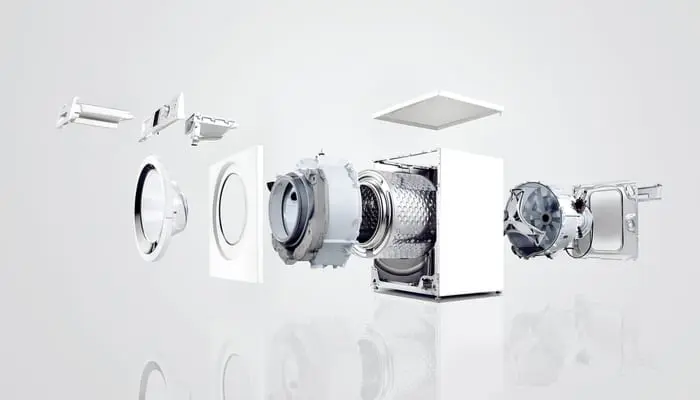
Prophotoo/Shutterstock
Another common reason a washer won’t spin is a faulty drive motor. Most washing machines have what is called a reversing motor. It moves in one direction to spin and in the reverse direction to agitate.
Often, the motor will stop working in just one direction, meaning the machine might still agitate even if it won’t spin.
The Drive Motor Might Be the Problem If
You smell a strange, burning odor or notice sparks under the machine. The machine may agitate without spinning or fail to agitate or spin. If there is a problem with the motor only spinning in one direction, you will need to have the motor entirely replaced.
Some motors have carbon brushes inside them that wear down over time and may need to be replaced, but won’t require a full motor replacement. Replacing the drive motor is not a job for someone who is inexperienced.
These induction-type motors are dangerous to work with and may result in electric shocks, so call in a professional for any job that will require working with the drive motor.
A professional can also identify whether the entire motor needs to be replaced or if it’s a less expensive fix, like replacing carbon brushes that wear out over time.
Motor Coupler
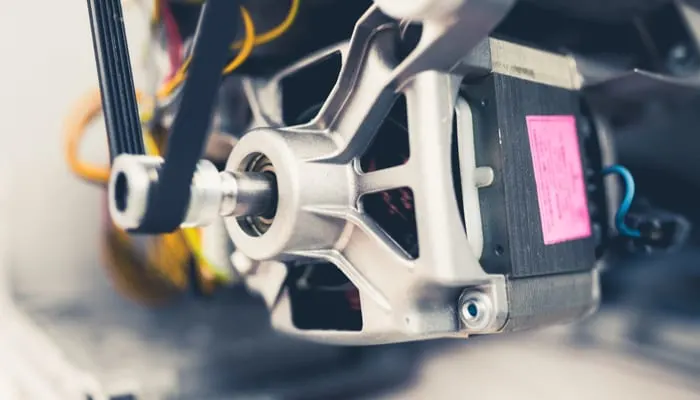
Nikkytok/Shutterstock
The motor coupler on a washing machine is made of plastic and rubber, two materials that can wear out over time. This part is mounted to the direct-drive transmission and motor shaft of the washing machine.
The Motor Coupler Might Be the Problem If
The washer won’t spin or agitate, but it still fills with water and drains. There might be a loud buzzing sound when the washing machine motor is running.
Motor couplers are inexpensive to replace (around $20), but getting to them requires removing the entire drive motor and forcing the old coupler off before mounting the new one.
This involves opening up the access panel, opening the washing machine cabinet, and removing the drain pump and drive motor. Then, everything must be put back exactly as it was.
While it’s a simple job for an appliance repair technician, it can be a dangerous and challenging job for DIYers. Why? Because electrical devices may hold an electric charge even after being unplugged.
Consider hiring a professional to replace the motor coupler if this seems to be the issue with your washing machine.
Lid Switch
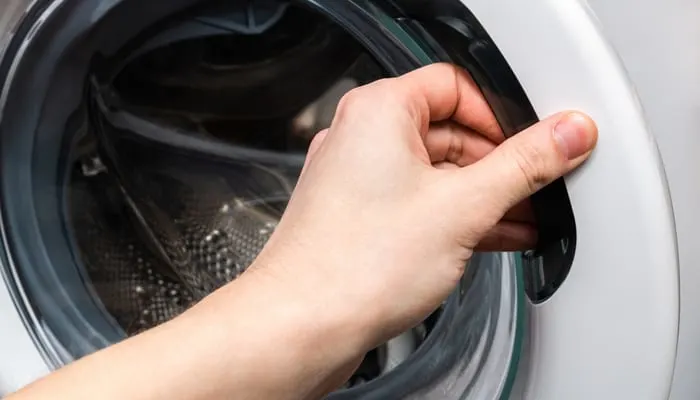
Bk87/Shutterstock
The lid switch on your washing machine is a safeguard that keeps the machine from running while the lid is open. If the switch fails, it no longer makes the connection that allows the motor to start running.
It will not run because without the connection, the machine “thinks” the lid is still open. replacing the switch often solves this problem.
The Lid Switch Might Be the Problem If
The washing machine won’t agitate, spin, or drain the water out of the tub. The machine may not work at all if the lid switch is the culprit.
Before you move onto more involved testing, you can try a quick fix that may solve your lid switch problem. The lid switch may be dirty enough to keep it from making a connection.
- Unplug the washing machine and locate the lid switch where the lid meets the cabinet of the machine.
- Soak a few cotton swabs in white vinegar and clean off the switch thoroughly. Ensure you don’t leave cotton fibers attached to the switch.
- Plug the washing machine back in and see if the clean switch fixes the problem.
If cleaning the switch doesn’t fix the problem, it may need to be replaced. If you have a multimeter, you can test it yourself to see if power is being supplied.
- Unplug the washing machine and locate the lid switch.
- Remove the lid switch (you may need to open the washing machine cabinet to access the full switch).
- Set your multimeter to Rx1 and touch both probes to the switch terminals. You should get a reading of zero, which indicates continuity. If you do not get a reading of zero, the lid switch will need to be replaced.
Broken Pump
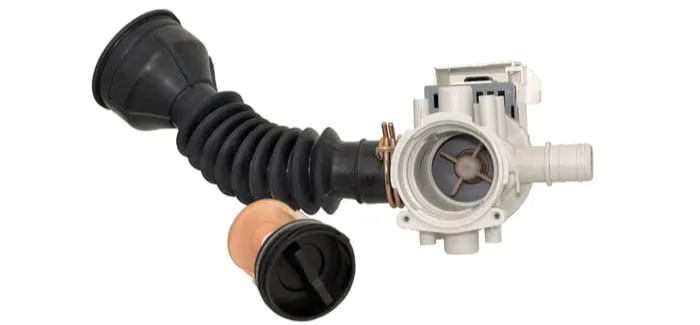
Ekipaj/Shutterstock
The pump on your washer moves the water in the machine into the drain hose, which enables the tub to fill. Once the water reaches the loop or the bend in the drain hose due to the pump’s action, it moves out of the drain.
A failed pump will result in the water not being able to drain out of the tub.
The Pump Might Be the Problem If
If your clothes are soaking wet when you pull them out of the tub and it’s still filled with water, the pump (or the pump belt) could be the problem.
You can find out if the pump is the problem by:
- Unplug the washing machine. Open the access panel.
- Identify the pump and see if it turns freely when you loosen the tension from the pump belt that is wrapped around it.
- If the pump belt is worn or broken, that is likely the extent of the problem. It will need to be replaced.
- If the pump does not turn freely or will not turn at all, you will need to have the pump removed and replaced.
If the pump turns out to be the issue, the machine will need to be drained before the pump can be replaced. A professional can drain the tub and replace the pump and/or pump belt for you.
Repair Costs When a Washer Won’t Spin
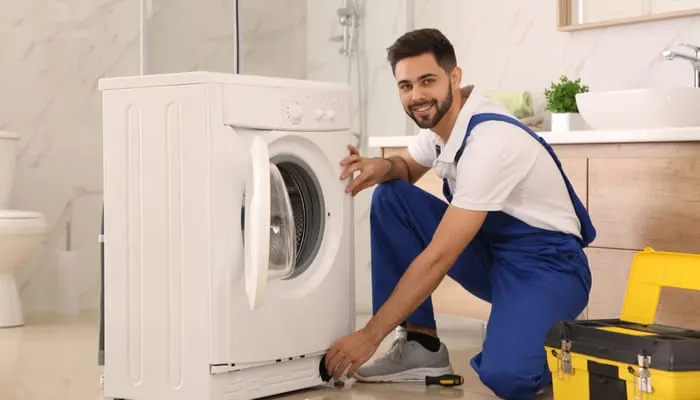
New Africa/Shutterstock
If you call a professional to repair your washing machine, it’s good to know what kind of costs you can expect to pay for the parts and labor. Here are national averages for washing machine repair and labor costs.
- Service call fee: $40 to $100
- Drive belt replacement: $5 to $50 for the belt + labor
- Motor replacement: $150 to $300 for the motor + labor
- Drain hose replacement: $3 to $30 for the hose + labor
- Pump replacement: $35 to $200 for the pump + labor
- Motor coupler replacement: $5 to $20 for the coupler + labor
- Repair technician hourly rate: $80 to $100 per hour after diagnostics
While it is certainly less expensive to purchase the needed parts and attempt to fix the issue on your own, a professional can ensure the proper parts are ordered and installed correctly.
They can also complete the job much faster than someone doing it for the first time. After all, they are professionals who see these same issues every day.
Many appliance repair companies offer free consultations to diagnose the problem and only begin charging the hourly rate (or flat rate – make sure to ask which) once they start working on the repair.
We partnered with Networx to help you find local appliance repair techs. Click to below to get a FREE quote.
Washer Won’t Spin? Call a Pro!
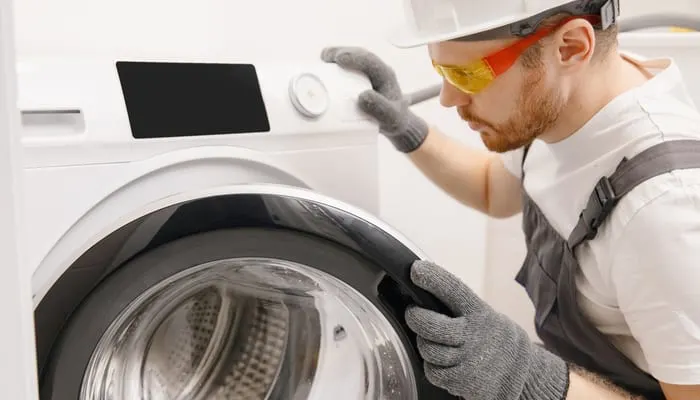
Parilov/Shutterstock
Should you call a professional if your washing machine won’t spin? Most of the time, you should rely on a trained and experienced appliance technician. A washing machine won’t spin these common reasons.
It can help you troubleshoot and identify the repairs that will need to be made before you call a repair tech. You can let an appliance repair technician know what you believe the problem is and save a little time to get straight to the issue.
Some of the reasons a washer won’t spin are easy fixes that you can do safely with limited tools, like cleaning the lid switch connectors or replacing a worn or broken drive belt.
However, any job that requires working with the drive motor, which contains an electrical capacitor that holds a charge even after the machine is unplugged, is best left to a professional.
To connect with a pro for service, simply click the button above and you’ll be paired with one or more local appliance repairmen. It’s super easy and takes less than 30 seconds.

